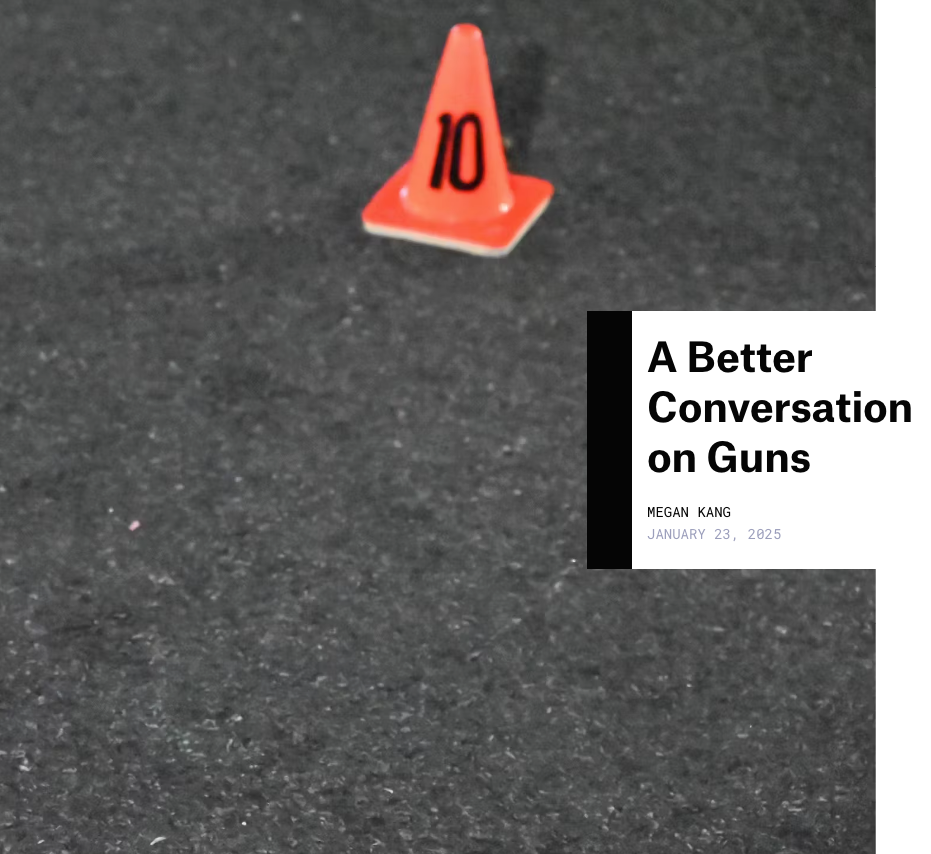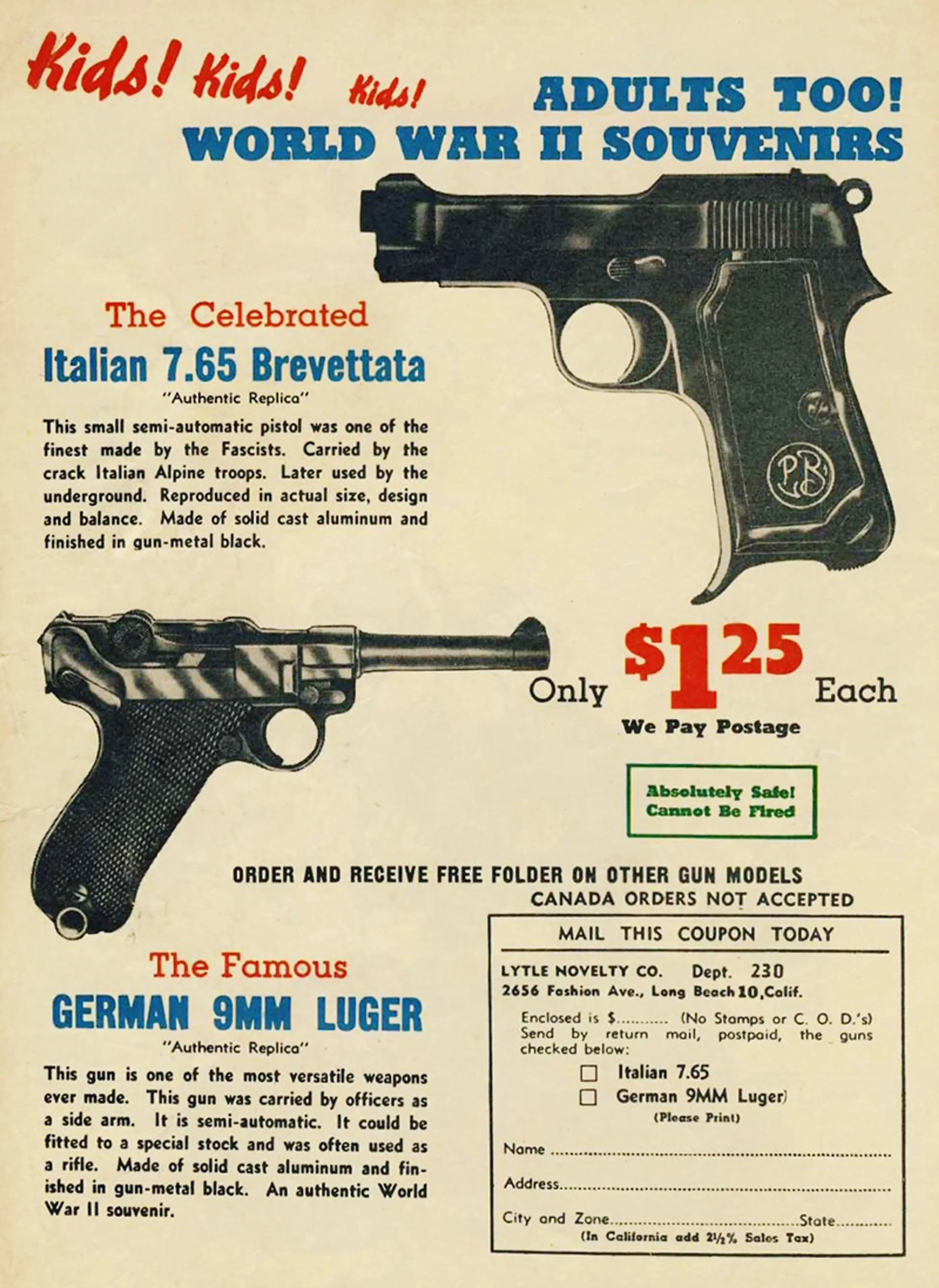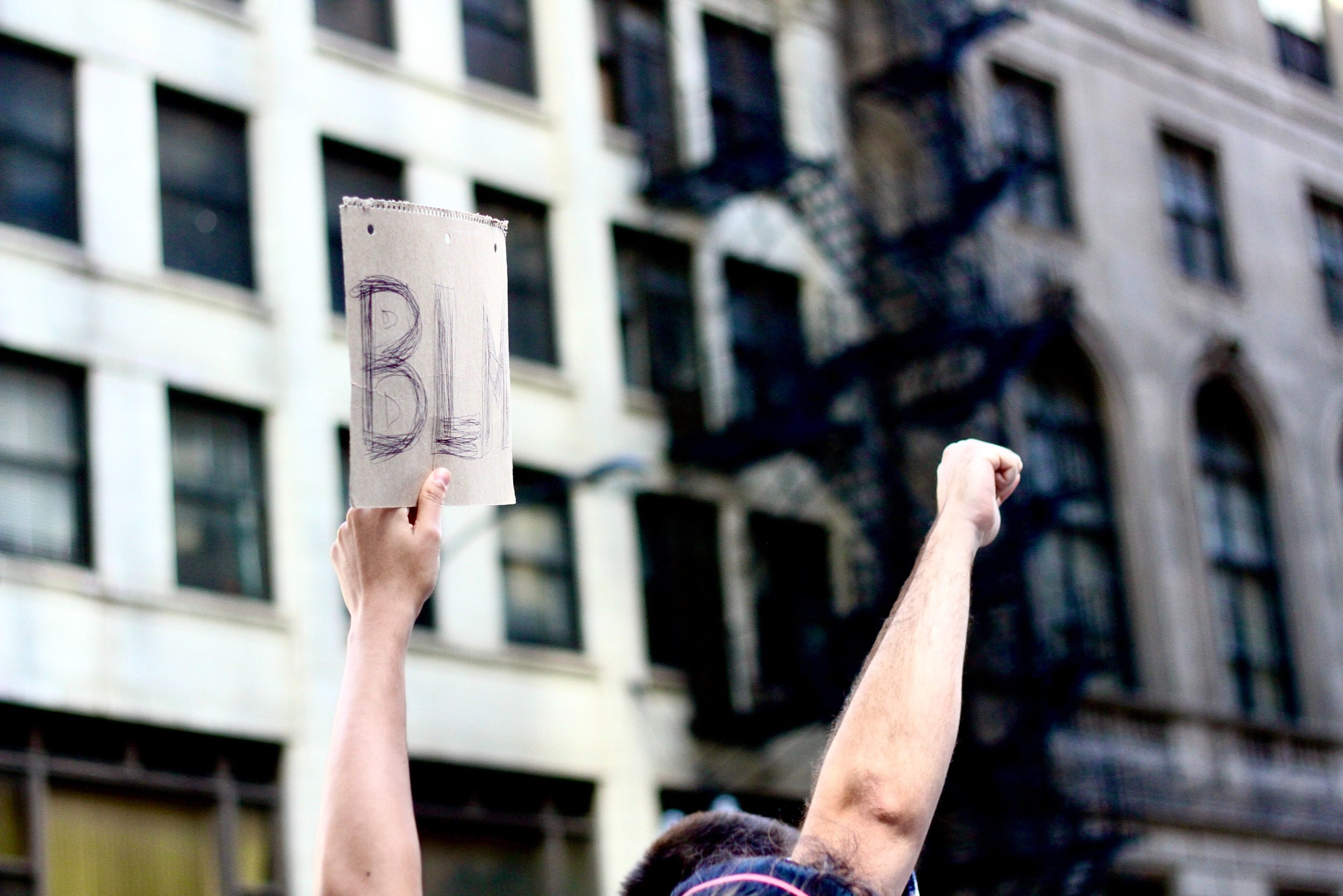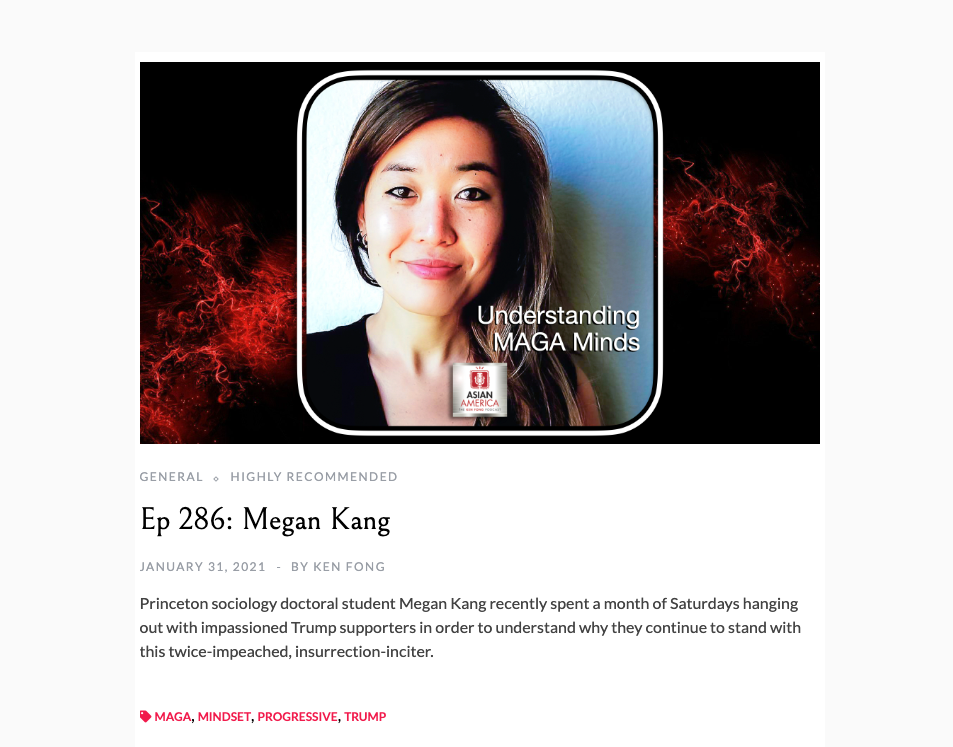Megan Kang is a sociology doctoral candidate at Princeton University. Her research aims to make sense of gun availability, violence, and organized crime through ethnography and mixed methods.
email me
curriculum vitae
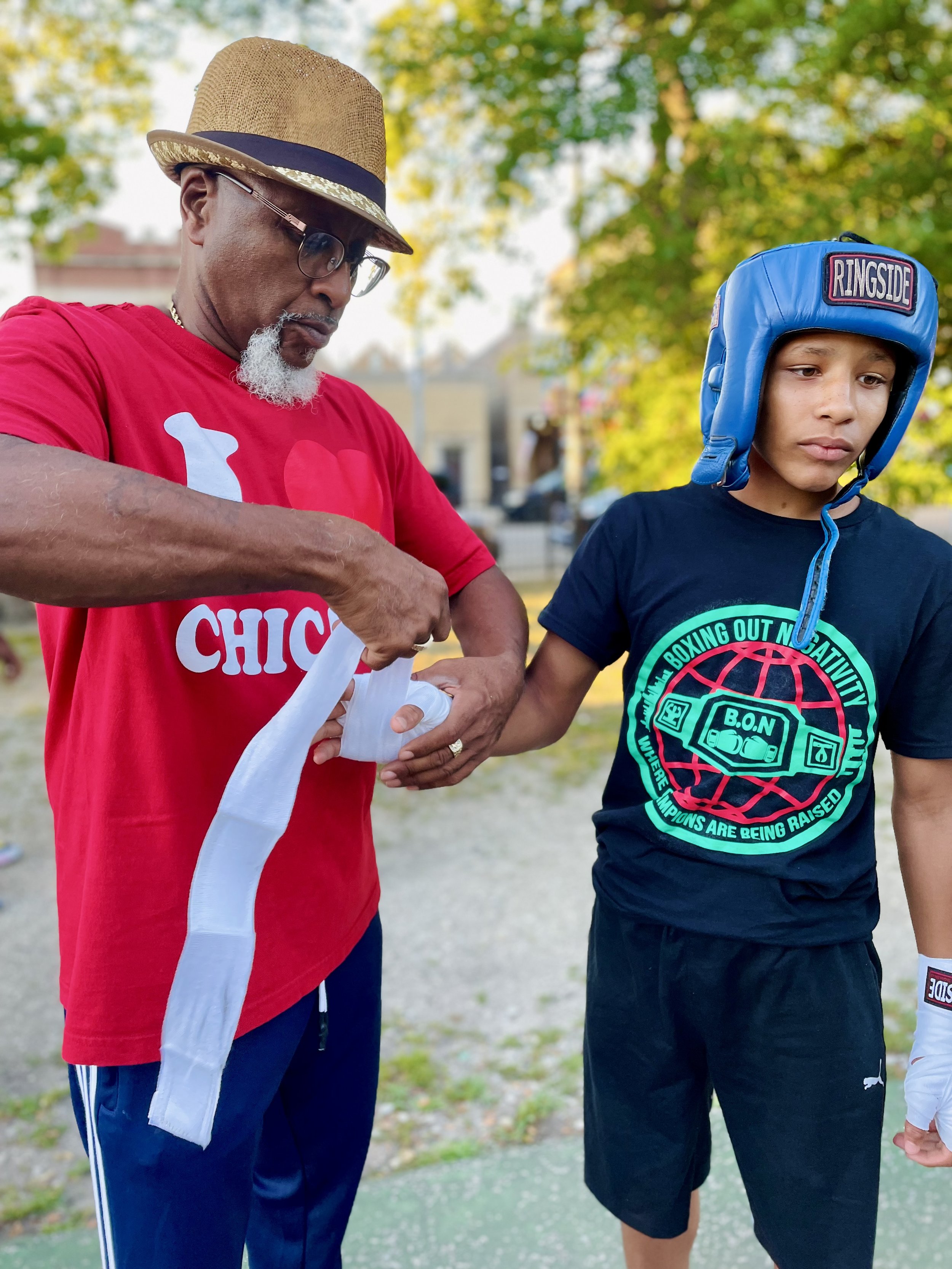
About
Megan Kang is a sociologist whose research examines crime and inequality in America and their impact on people’s daily lives. Her award-winning dissertation, grounded in ethnographic fieldwork in Chicago, demonstrates how guns socialize young people into violent identities and create barriers to exiting criminal networks. More broadly, her work explores how gang fragmentation and widespread firearm availability create conditions in which violence persists, with particular attention to how signaling and reputational concerns shape behavior in criminal organizations and transitions out of them.
Using ethnography, in-depth interviews, and econometrics, she examines the drivers of inequality in safety from multiple perspectives. Her work appears in Criminology, American Journal of Preventive Medicine, Epidemiology, and Journal of Marriage and Family, and has been featured in The New York Times, The Washington Post, Aeon, and Vital City. She is a Research Affiliate at the University of Chicago Crime Lab and the Violence and Inequality Project, with support from Rutgers’ New Jersey Gun Violence Research Center and ASU’s Bringing Research and Innovation into the Debate on Guns in Society.
Kang is committed to public sociology through co-constructing knowledge with community and civic partners, writing media commentary and policy briefs, and maintaining a publicly available dataset on household gun ownership. She is dedicated to training and mentoring students and received a teaching award from Princeton's Sociology Department. Her research advances theoretical understandings of violence and informal social control while informing evidence-based policy solutions.
Photo: Charles and Jalen from Boxing Out Negativity, Chicago, 2022
EDUCATION
Princeton University, Ph.D. (expected May 2026)
Princeton University, M.A.
UChicago Harris School of Public Policy, M.P.P.
University of California, Berkeley, B.A.
AFFILIATIONS
Research Affiliate, University of Chicago Crime Lab
Research Affiliate, Violence and Inequality Project
Student Affiliate, Kahneman-Treisman Center for Behavioral Science & Public Policy
BRIDGS Emergent Scholars Fellow, ASU BRIDGS
Research
PUBLICATIONS [google scholar]
Weaker the Gang, Harder the Exit, Criminology, 2025
Other adults in the United States: Improving survey measures of youths' non-parental adult relationships, Journal of Marriage and Family, 2025 (with Rachel Brown-Weinstock, Kathryn Edin, Sarah Pachman, and Kaitlyn Bolin)
The Era of Progress on Gun Mortality: State Gun Regulations and Gun Deaths from 1991- 2016, Epidemiology, 2023 (with Patrick Sharkey) [working paper] [Covered in NYTimes, Washington Post]
Balancing Empirical Trade-offs When Evaluating U.S. Gun Policy, Epidemiology, 2023 (with Patrick Sharkey)
Extending the Firearm Suicide Proxy for Household Gun Ownership, American Journal of Preventive Medicine, 2023 (with Elizabeth Rasich) [access dataset here] [working paper] [Covered in Aeon, Vital City, The Trace]
State-Level Household Gun Ownership Proxy Dataset, 1949-2020, Data in Brief, 2023 (with Elizabeth Rasich)
Intervention of Choice: Behavioral Science and Gun Violence, Quinnipiac Law Review, 2021 (with Jens Ludwig and Elizabeth Rasich)
WORKING PAPERS
Social Cognition and Neighborhood Violence (with Kathryn Edin, Jens Ludwig, Sendhil Mullainathan, and Timothy Nelson), Revise & Resubmit at Proceedings of the National Academy of Sciences (PNAS)
Becoming a Shooter [Job market paper], Under Review
How the Truly Disadvantaged Endure: Trauma and Daily Functioning (with Kathryn Edin, Jens Ludwig, Sendhil Mullainathan, and Timothy Nelson), Under Review
DATASETS
Firearm Suicide Proxy for Household Gun Ownership, 1949-2020, https://doi.org/10.7910/DVN/QVYDUD, Harvard Dataverse
Current work
-
Outstanding Graduate Student Paper Award, Decision-Making, Social Networks, and Society Section, American Sociological Association, 2025; Robert F Dentler Student Award, Sociological Practice and Public Sociology Section, American Sociological Association, 2025
Sociologists have extensively studied violence but paid less attention to how firearms shape the identities and life trajectories of those who carry them. Drawing on ethnographic fieldwork and life-course interviews in Chicago, I examine how individuals develop reputations as shooters and the obstacles they face in shedding this label. The erosion of gang control over gun markets, coupled with the status attached to being a shooter, heightens pressures to cultivate violent reputations. Youth move from acquiring a gun to becoming a shooter through rituals and public displays that transform gun carrying into a social identity. Three mechanisms make shooter identities particularly durable: the lethality of firearms creates lasting rival networks; social media preserves shooter reputations through permanent digital archives; and widespread firearm availability creates a security dilemma where former shooters cannot safely disarm while rivals remain armed. For former shooters, conventional turning points like school, romantic relationships, and work become sites of vulnerability rather than transformation. This study reveals how guns function as social forces that make exit from violence increasingly difficult even after behavioral change occurs.
-
R&R at PNAS; Co-authored with Kathryn Edin, Jens Ludwig, Sendhil Mullainathan, and Timothy Nelson
Why do some people resort to violence while others in similar circumstances do not? Drawing on 99 in-depth interviews with young men from high-violence Chicago neighborhoods who participated in a community violence intervention, we develop a theory of how past exposure to violence shapes the social cognitions that influence future violence—through the schemas and scripts people use to interpret social situations and guide behavior. We identify three specific social cognitions that respondents associated with violence involvement: misconstruing ambiguous cues as threats, defaulting to a narrow set of behavioral responses, and attributing violent behavior to fixed personal traits rather than situational factors. Respondents report that participation in the program’s cognitive behavioral component shifted these social cognitions in ways they associated with reduced violence involvement. The consistency of these self-reports combined with the program’s experimental impacts suggest the hypothesis that these specific social cognitions may play an important role in violence and may be potentially modifiable through intervention.
-
Criminology [read here]; Outstanding Student Paper Award, Division on Developmental and Life-Course Criminology, American Society of Criminology, 2025
This study draws on 95 interviews and observations with gang-affiliated individuals in Chicago to examine how gang structures shape disengagement and desistance from crime. Over the last two decades, the city’s gangs have experienced a decline in group closure, or their capacity to regulate membership and member behavior, and a blurring of boundaries between those active in a gang from all others. In the past, Chicago’s gangs maintained closure and bright boundaries that made gang affiliations, norms, and territories clearly defined. Leaving these gangs required costly exit rituals that signaled an unambiguous departure while facilitating desistance. Today, with weaker gang structures and blurry boundaries, leaving a gang is no longer a distinct event. However, the ease of gang disengagement makes desistance harder, as inactive members struggle to knife off past ties and access turning points. In this uncertain landscape, desistance tactics can backfire, sending blurred signals—behaviors intended to create distance from former affiliates and rivals but appear as wavering commitment to supporters—that trap individuals in a liminal space between social worlds. Contrary to leading desistance theories that emphasize individual readiness, opportunity, and pro-social bonds, this study underscores how group structures critically shape pathways out of crime.
-
Co-authored with Kathryn Edin, Jens Ludwig, Sendhil Mullainathan, and Timothy Nelson
Most Americans believe that poverty is caused by individual failure. Americans, more so than Europeans, think that how someone’s life turns out is a function of their own attitudes and behaviors. In this study we re-examine this perspective drawing on interviews with 99 current and past participants of Chicago’s Rapid Employment and Development Initiative (READI), a behaviorally informed violence prevention program, and six months of observation at READI sites. These data illustrate the impact on subjects of what appears to be a key barrier to their economic self-sufficiency – trauma – as well as the long shadow trauma plays in shaping every aspect of daily life. The results suggest the hypothesis that common interpretations of poverty as a downstream consequence of poor life choices ignore the role of trauma. Ending poverty in America may not be possible without researchers and policymakers paying greater attention to this underappreciated source of disadvantage.
Public writing / coverage
Museum of Contemporary Art, Detroit, 2015
Back of the bus in Chinatown, San Francisco, 2012
Mexican ranchero, San Agustin, 2012
Nara, Los Angeles, 2014
Chicago Skyline, 2023
On the sidelines, Manila, 2010




